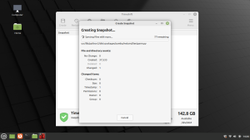A look at Linux Mint 21
Linux Mint 21 "Vanessa" was released on July 31. There are no real headline-grabbing features that come with the new release, as the project generally seeks to make incremental changes, rather than larger, potentially disruptive ones. Changes in this release include a new Bluetooth manager that brings several improvements, driverless printing and scanning by default, a process monitor to inform the user about resource-intensive background tasks, new functionality for the Timeshift system backup tool, and several major under-the-hood improvements to the Cinnamon desktop environment.
Like previous releases, Linux Mint 21 is available in editions for the Cinnamon, MATE, and Xfce desktop environments. Cinnamon is based on GNOME 3, but with major changes to make it more like other desktop environments with a bottom panel and menu similar to that used in Windows 7 and earlier, rather than the heavily redesigned interface of GNOME 3 and later. Cinnamon was created by the Linux Mint developers due to criticisms of changes in GNOME 3 that were seen as unnecessary. MATE is a continuation of GNOME 2 that was originally forked by an Arch Linux user for the same reason, and Xfce is a lightweight desktop environment designed for computers that may not run other environments well. All of the editions in Linux Mint use X11; Wayland support is not currently on the development roadmap for Cinnamon. MATE and Xfce are working on Wayland support separately from the Mint project, and a future release of Linux Mint is likely to include that work in those editions.
[...]
Mint 21 replaces Blueberry, the Bluetooth manager used in previous versions, with Blueman, which has more features and provides more information than Blueberry. Blueman also has better headset compatibility and improved audio profile support. Additionally, while Blueberry is a wrapper around the GNOME-specific gnome-bluetooth, Blueman is specifically designed to be cross-desktop.

